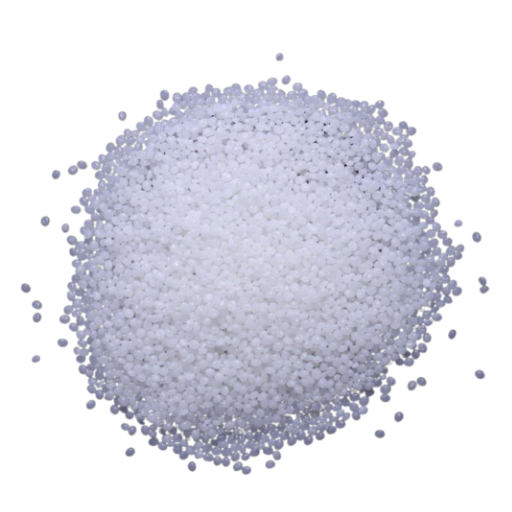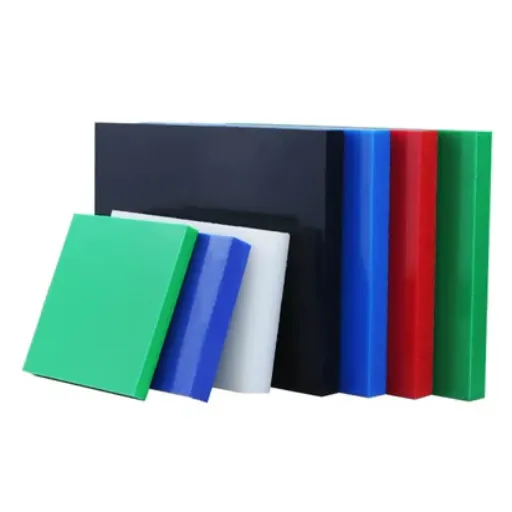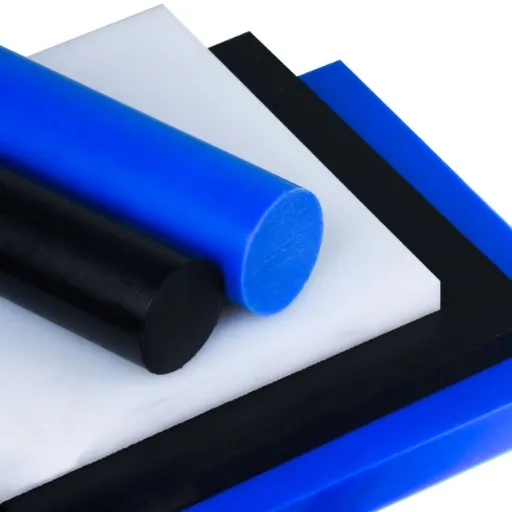Silicone is a versatile and durable material used across industries, from medicine to cookware and electronics. Despite such versatility, the classification of this material often creates amusement and confusion among the layman, especially when persons try to separate it from entirely different materials like thermoplastics. Is silicone-a thermoplastic, or is it something else entirely? This article delves into silicone’s unusual nature, chemical composition, heating behavior, and its comparison with traditional thermoplastics. By the end of this article, you should already be aware of the actual nature of silicone and why it is preferred for so many applications.
Introduction to Silicone and Thermoplastics
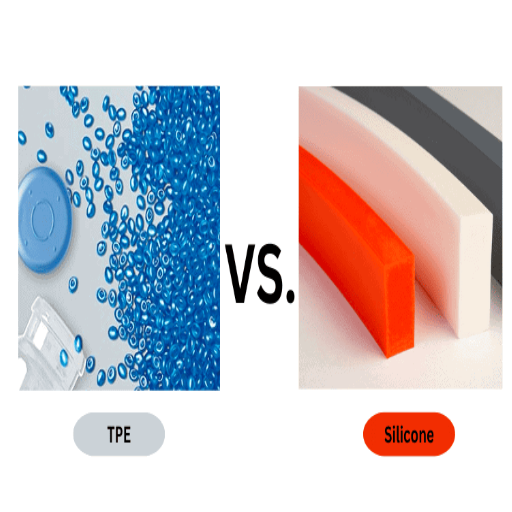
What is Silicone?
Silicone is a synthetic polymer of silicon, oxygen, carbon, and hydrogen. Unlike organic polymers that build carbon chains, the backbone of this polymer includes alternating atoms of silicon and oxygen; this distinguishes silicone structurally. The feature that gives this special arrangement is that it resists thermal effects and can be unusually flexible, resisting environmental controls like UV radiation, moisture, or extreme temperature, depending on its application requirement.
Unlike thermoplastics that can be melted and reshaped indefinitely, silicone behaves as a thermoset resin: once cured by heat or chemical means to any given shape, it cures while maintaining its elastic properties and returning to a durable state. This essentially makes silicone the best fit for applications that require stable performance over time, e.g., medical implants, cookware, sealants, and electrical insulation.
Another factor that makes silicone a premium material for the range of applications in healthcare and cosmetic industries is its biological safety. First, silicone can remain flexible and functional over a very broad temperature range, usually between -58°F and 446°F (-50°C to 230°C). These positive attributes set silicone apart as a material that lends special combinations of strength and adaptability alongside reliability not offered by many other materials.
Defining Thermoplastics and Thermoplastic Elastomers
Thermoplastics are a group of polymer materials that soften when heated and harden upon cooling. They undergo reversible physical changes and can be reshaped repeatedly without changing their chemical composition. Common examples include polyethylene, polypropylene, and polystyrene, which are utilized for various purposes, from packaging to automotive parts. Thermoplastics essentially separate from other materials by retaining their properties over many heating and cooling cycles. They are finally being selected as necessary during manufacturing and recycling processes.
TPEs, in contrast, promise to have the rubber elasticity while maintaining the processing advantages of thermoplastics. They present an account structure with segments having hard and soft aspects: hard provides the structural integrity, whereas soft renders them flexible. This enables the TPE to provide elasticity combined with flexibility and hence is best suited to applications where a lasting yet flexible solution is critical, e.g., healthcare, consumer goods, and automotive manufacturing. Unlike conventional thermoset rubbers, TPEs can be reprocessed and recycled, offering a less expensive and sustainable alternative without compromising their functional performance.
Knowing the properties of thermoplastics and thermoplastic elastomers helps us better understand modern industries and material science innovations. These materials are adaptable and efficient across many domains, underlining their prominence as materials we use in our lives.
Silicone Rubber: An Introduction
Silicone rubber is an extremely flexible and highly resistant synthetic elastomer supported by a vast scope of application techniques. It is made from silicone, a polymer comprising silicon, oxygen, carbon, and hydrogen. The significant properties worth mentioning are extreme thermal stability and temperature going down to -50°C to +250°C (-58°F to 482°F); silicone rubber is therefore an elastic material for very harsh atmospheres. Being resistant to weathering, UV radiation, and ozone, this material achieves its utmost performance over time, even when used in an outdoor application.
It is, however, conceivable that the silicone rubber will show tremendous resistance to electric current, making it a material of choice for electronics and electrical parts. Its use is also wide in medical and food-grade sectors as it assures hygienically safe and non-toxic tubing, seals, and kitchenware options. In industries such as automotive, aerospace, and healthcare, silicone rubber is valued for its functional reliability and ability to absorb the structural complexity required for molding. The ability to hone these incomparable properties in one outfit makes silicone rubber a potential partner in realizing modern engineering and design solutions.
Material Properties of Silicone
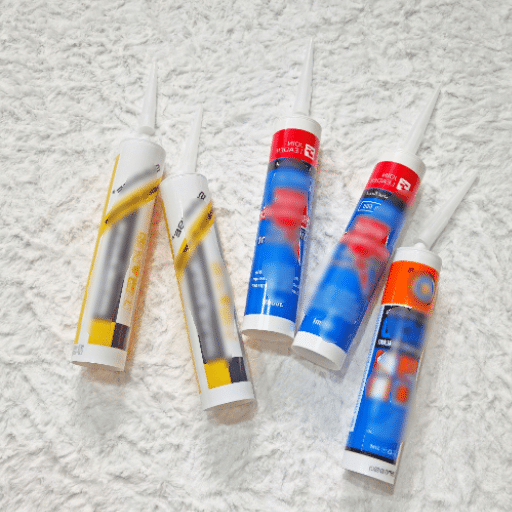
Unique Characteristics of Silicone Rubber
Silicone rubber is well-recognized for its supreme versatility and outstanding performance characteristics, positioned as a key material with varied applications across several industries. Protection from a wide temperature range is one of these characteristics that makes silicone supreme in the field. Because it remains stable and flexible anywhere between approximately -103°F and 500°F (-75°C to 260°C), it is right at home in extreme environments, including the engine department of automobiles, aerospace component building, and heavy industrial machinery.
Apart from being thermally stable, silicone rubber offers excellent weather resistance. It can withstand the full force of UV radiation, ozone, or other weather extremes without degrading or wearing away over time. Being chemically inert, it does not form a reactive bond with most materials and is thus used in medical equipment and food-grade appliqué. Silicone rubber is the best possible insulation choice in the electrical and electronics industries.
Another vital aspect of silicone rubber’s properties is its ability to take complex shapes without compromising the integrity of the product, thus yielding very high design freedom. With its biocompatibility and resistance to microbial growth, the materials enjoy immense utilization in healthcare and pharmaceutical products. With this combination of qualities, silicone rubber is seen as the thrust behind innovative engineering and trustworthy solutions in today’s technological advances.
Comparative Analysis: Silicone vs. Thermoplastic Elastomers
Silicone and thermoplastic elastomers (TPEs) are widely used materials for disparate applications with differing properties. Silicone is very stable thermally, remaining in the temperature range of -60°C to over 200°C without any significant loss. This property finds it in desirable application, especially for automotive or aerospace components, where compositions are subject to severe heat. On the other hand, TPEs are more suited to hold up within a narrower temperature range, usually between -50°C and 120°C, as increasing temperature beyond these limits usually softens them and would thus discard the structural integrity expected of these materials.
Silicones are highly durable against environmental influences like UV rays, ozone, and weather factors, ensuring that “factors” here do not establish any relationship to “weather.” In contrast, highly flexible and cheap TPEs tend to deteriorate with prolonged exposure to all those factors, limiting their life cycle for specific uses.
Another considerable difference lies in chemical resistance. Silicone is more resistant to many chemicals, oils, and solvents, thus ideal for applications where repeated contact with harsh substances is essential, such as medical equipment or sealing gasket materials. TPEs, by comparison, provide moderate chemical resistance and are usually selected where exposure is less severe.
TPEs enjoy a significant advantage in manufacturing as they are recyclable and cheaper to produce. TPEs are processed like plastics and yield faster outputs; therefore, they should be a more viable alternative for commercial applications and mass production. Silicone, however, requires processing at much greater precision levels, necessitating higher costs for the whole process and materials.
Many factors will influence the choice between silicone and thermoplastic elastomers, including working circumstances, temperature tolerance, exposure to environmental conditions, and price considerations. By selecting the strengths and best characteristics associated with each and selecting them accordingly, industries can benefit from optimal technical performance and cost effectiveness.
Understanding Liquid Silicone Rubber (LSR)
Liquid Silicone Rubber, or LSR, is probably one of the many variants of silicone elastomers. It is renowned for possessing excellent, unique properties, which make it important in various industries. LSR is a two-part system comprising a base material and a curing agent capable of reacting together, catalyzed by platinum during processing. Once cured, it exhibits commendable flexibility, tensile strength, and thermal stability at very high-temperature extremes between -58°F and 392°F (-50°C and 200°C).
One of the more potent properties of LSR is its chemical resistance against water, oils, and numerous corrosive chemicals, hence its widespread use in infrastructures such as medical, automotive, and electronics fields. Biocompatible and hypoallergenic, it shares its status through FDA and ISO certifications, which are crucial for medical devices, including catheter repair, seals, and implantables. Given the UV resistance and superior material robustness, it can also be employed for outdoor use, gracing the environment in all circumstances.
Recent developments in LSR have led to variants such as self-lubricating grades and low-friction grades to suit specialized applications in precision engineering. Moreover, increasing injection molding technologies are paving the way for efficient manufacturing with high repeatability and low material wastage. Given the industry’s focus on a green future trend, the processability of LSR in terms of recycling and low energy requirement is a great boost for existing market providers.
Applications of Silicone and TPEs
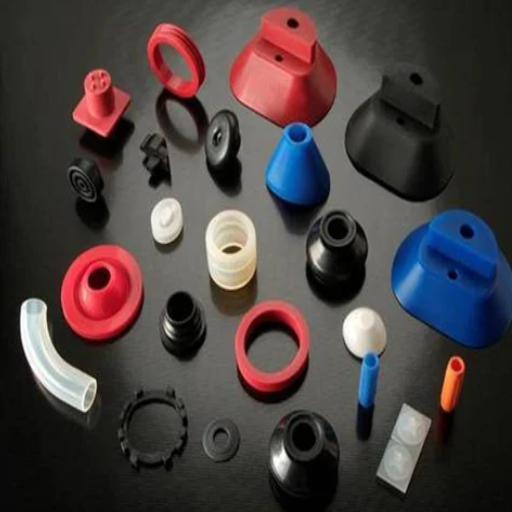
General Uses of Silicone in Industry
Silicone, an extremely versatile material with unique flexibility, thermal stability, and resistance to water and chemicals, sees application in various industries. The health systems give the utmost preference to the silicone application. It is used to produce implants, catheters, and prosthetics, whereby its biocompatibility is taken advantage of. Some typical applications for silicone in the automotive sector include the production of gaskets, hoses, and seals that may be subjected to extreme variations in temperature or mechanical stresses for performance and durability.
In the electronics industry, silicone ensures the insulation of circuits against heat and environmental damage by being employed as thermal interface materials, coatings, and adhesives. In construction, on the other hand, silicone sealants and adhesives are invaluable for waterproofing and bonding uses. Another striking industrial application is incorporated into manufacturing in the consumer goods industry for kitchenware, bakeware, and personal care products. This underlines that, being toxic-free and nonstick, silicone can serve many purposes, cementing its indispensable role in shaping manufacturing and product development.
Advantages of Thermoplastic Elastomers
The combination of properties with which the Thermoplastic Elastomers (TPEs) are endowed has changed the course of today’s product design and manufacturing processes. One of the most significant advantages is versatility: TPEs behave like plastics during molding, extrusion, or any kind of processing, but they behave like rubbers in their elastic behavior. This makes them an easy fit for applications ranging from the automotive industry and consumer products to medical devices and electronics.
Another feature that ensures their preference lies in their reuse: contrary to thermoset rubbers, which once cured cannot be reshaped again, TPEs can be heated and reshaped many times over. This improves the chances for sustainable manufacturing of products and reductions in environmental impact. The lighter material makes products more energy-efficient, especially in automotive and aerospace applications, because it enables fuel efficiency through weight reduction.
Other attributes of TPEs include good resistance against fatigue, weathering, and temperature variations, which makes them ideal for harsh applications such as seals, gaskets, and flexible cables. They can also be tailored to yield properties with very particular requirements, like toughness for consumer goods or velvety finishes for wearables.
Finally, because of efficient processing coupled with long-life conversion, TPEs are genuine cost-effective alternatives that help companies optimize the balance between cost and performance in product design. With the above range of benefits, thermoplastic elastomers have an essential role to play in the advancement of technology and sustainable innovation.
Choosing the Best Material for Your Application
When choosing the best material for your application, it is imperative to consider a few key factors to ensure the best performance at the most economical cost. You should start by considering your product’s specific requirements in terms of mechanical strength, flexibility, resistance to chemicals, and thermal stability. For example, you would want to use TPE in an application requiring flexibility and comfort, whereas engineered plastics such as PEEK are ideal in high-temperature and chemically harsh environments.
There is also the processing aspect to consider for the materials available for your application. These include: How readily can the material be molded? Is the material easily recycled? How well will the material stand up to additive manufacturing? These can make a big difference in the success of your production processes. A company striving toward an environmentally conscious position can leverage these materials, either derived from renewable resources or highly recyclable, giving them a competitive advantage in meeting environmental regulations.
Sustainability Cost-Performance Ratios consider the initial cost of the material versus durability and lifecycle. For example, in some instances, higher performance may come at significant upfront costs; however, with reduced long-term expenses due to durability in the application. Once the specific needs of an application are married with such considerations, an application-specific material can be selected, guaranteeing success. Agent for innovation and sustainability.
Molding Processes for Silicone and TPEs
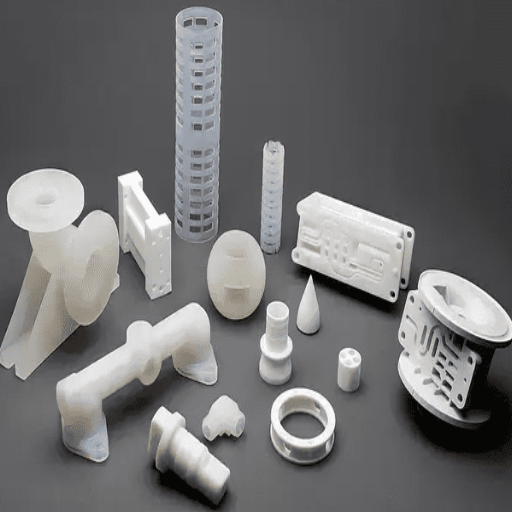
An overview of injection molding techniques
Injection molding ranks among the most versatile and widely adopted manufacturing processes used in tooling parts for materials such as silicone and thermoplastic elastomers (TPEs). The process starts by heating the material to a workable, molten state. It is then injected under very high pressure into an accurately designed mold cavity, which cools and solidifies into the desired shape. This cycle is repeated to provide rapid production, thus apt for high-volume manufacturing.
Modern techniques optimize injection molding using various technologies to promote the best performance, precision, and efficiency. Micro-injection molding, for example, has become very important to making small, intricate parts that industries such as medical devices and electronics require. It allows for extreme detail and consistency at a microscopic scale. In addition, other methods, such as gas-assisted injection molding, can create lightweight components by injecting gas into the melt, thus minimizing the material required but still retaining structural integrity.
More automation provides, streamlines the process, and assures quality consistency. Robotics and real-time monitoring reduced cycle times and discovered defects earlier, boosting efficiency. Additionally, data-driven improvements allow settings such as temperature, pressure, and cooling rates to be fine-tuned for unmatched accuracy.
Forming highly durable and versatile surfaces ensures that injection plating is valuable to many industries, from automotive parts to consumer items. By combining the more common material sciences with cutting-edge technology, manufacturers gain in sustainability, waste reduction, and productivity.
Molding Liquid Silicone Rubber
This process for manufacturing LSR is extremely efficient in using the peculiar properties of silicone for the manufacturing of highly durable and flexible components. This LSR is a two-part platinum-cured elastomer stable over a broad temperature range, making it particularly useful in aggressive applications. Being of a lower viscosity, injection molding of LSR allows very complex geometries and intricate designs to be formed with extraordinary detail and consistency.
The process finds extensive application in healthcare, automotive, consumer electronics, and aerospace industries where the material is biocompatible, chemically resistant, and thermally stable. For instance, the main uses of LSR in the medical field are to fabricate syringes, seals, and wearable devices, making the whole process safe and reliable for patient care. Further production of LSR, being highly automated, reduces waste and increases repeatability, making it a sustainable manufacturing approach.
Continuous research in the chemistry of silicone and in production technologies keeps widening the horizons of LSR, from improving mechanical properties to better production efficiency. Integrating these advances offers companies an edge in dealing with complex requirements from different sectors while keeping the focus on quality and sustainability.
Contrasting Molding Processes: Silicone vs. TPEs
In comparing the molding processes for Liquid Silicone Rubber (LSR) and Thermoplastic Elastomers (TPEs), several differences appear that help show the strengths and considerations of both materials. The silicone molding process usually involves high-temperature vulcanization (HTV), which ensures excellent thermal stability, flexibility, and durability. Silicone is thus perfect where resistance to extreme temperature, UV exposure, or chemical degradation is desired. Silicone molding yields cross-linked structures that impart the typical memory to silicone and enable long-term performance.
TPEs, conversely, are motivated by their ease of processing. Being thermoplastic, they are meltable and can be reshaped many times, allowing quicker production cycles and lower material wastage. Processing of TPE is often done at lower temperatures than those used for silicone, hence offering greater energy consumption and efficiency savings. Polymers may be solvents of recyclability and versatility, but they generally do not provide the same resistance to heat or chemical actions as silicone. Furthermore, Thermoplastic Elastomer has inferior resistance to inclement weather conditions over a specific period of time; hence, they will be recommended for less demanding, mid-term uses.
In production, silicone is favored for more complex designs due to its flexibility and consistency in molding; however, TPEs take the toll on lower initial tooling costs and application across a more standard injection molding equipment. Both materials have unique advantages, and the decision may sometimes depend on functional application requirements, expectations of lifespan, and environmental conditions. Hence, a proper project assessment will be essential when choosing between the two.
Differences Between TPE and Silicone
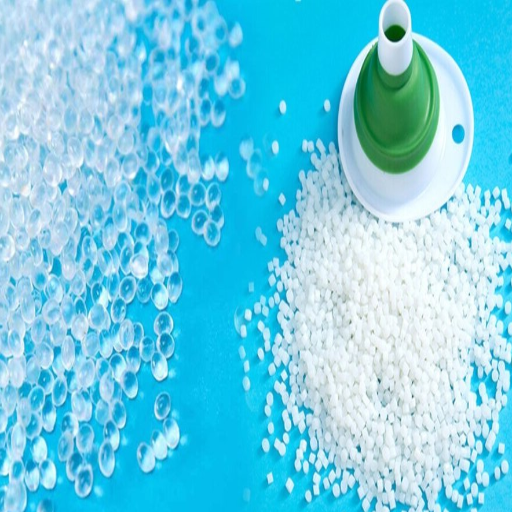
Comparison Between Physical and Chemical Properties
As far as physical and chemical properties are concerned, TPE and Silicone both display specific, unique properties suitable for applications. TPEs, or thermoplastic elastomers, are flexible, lightweight, and recyclable. They can be melted and reshaped, making them appealing for fast manufacturing. These materials have excellent elasticity but withstand only moderate temperatures and may not perform under extreme heat or chemical exposure.
Silicone, on the other hand, commands fame because of its durability and resistance to unfavorable conditions. My experience tells me that silicone can take extremes in temperature, from the most intense cold to the highest heat, without suffering structural damage. Its reasonably good resistance to UV light, oxygen, and many chemicals makes it a better choice for long-term applications requiring high performance. Generally, silicone is biocompatible, making it a preferred material in medical and food-contact applications.
Finally, the choice between TPE and silicone depends on project-induced demands. TPE is most often preferred for applications where cost efficiency and versatility are prioritized. However, whenever endurance, temperature tolerance, or chemical resistance is more essential, silicone should be favored. It is crucial that the properties be examined alongside the intended use to guarantee the best performance and cost-effectiveness.
Cost and Performance Differences
When exploring the cost and performance of TPE versus silicone, it would seem there are sharp differences suited to distinct needs. Generally, TPE is less expensive, making it a perfect choice in projects where cost-efficiency is key without compromising flexibility and adaptability. Its thermoplastic nature means it can be processed much more easily and recycled, maintaining low manufacturing costs, especially for massive production runs. Furthermore, since TPE can duplicate silicone’s elasticity and cushioning properties at a lower price, it is frequently preferred in manufacturing things such as grips, seals, or custom components.
Silicone is pricier, and its performance and increased durability justify these higher prices. Studies show that silicone should be recommended in all applications requiring demanding performance standards: in extreme temperatures, exposure to UV radiation, or harsh chemical agents. This performance will see the end of degradation and superior thermal stability over all materials; therefore, it will find utility in the industrial, medical, and automotive fields where reliability with longevity is the real obsession. Even though silicone must be bought at a higher price, its ability to last longer and its advantages in specialized areas justify the additional cost in crucial areas.
The fundamental factors of distress weigh all decisions between TPE and silicone. When budget limitations and adaptability gain cause, TPE will be favored in many ways. On the contrary, if resilience, tolerance to extreme conditions, or mandatory safety standards are all required by the application, silicone is cast as the second-best.
Suitability for Different Applications
When setting the criteria for the suitability of TPE or Silicone for different types of applications, I always begin by evaluating the specific demands placed on the project. Where flexibility, ease of processing, and cost efficiency come on top, I find TPE to be, more often than not, the right choice. TPE finds application in consumer goods, automotive components, and medical devices where moderate durability and adaptability suffice for performance. Moreover, being recyclable and customizable through various formulations makes it a practical and sustainable solution for several industrial sectors.
On the other hand, I acknowledge that there are circumstances where only silicone can meet the needs elicited by the project. Silicone’s extraordinary resistance to high and low temperatures, unmatched durability, and biocompatibility make it indispensable in extreme environmental conditions where safety is paramount. For instance, silicone is employed in healthcare for implants and surgical tools due to its strict adherence to medical-grade standards. Likewise, the food and beverage industry finds service in bakeware and sealing non-toxic and heat-resistant components.
The final choice is always reached based on carefully weighing the project’s requirements, constraints, and ultimate goals. With a clear understanding of how each material’s properties relate to its unique application, I ensure the best-performing alternative compatible with the project’s economic and functional specifications. Whether cost-effective and flexible solutions, TPE, or demanding specialized solutions, a thorough understanding of the situation guarantees a well-informed choice able to deliver what is expected.
Reference Sources
-
All About the Differences Between TPE and Silicone – A detailed comparison of thermoplastic elastomers (TPE) and silicone, including their properties and applications.
-
Thermoplastic Elastomers vs. Liquid Silicone Rubber – An in-depth look at the similarities and differences between thermoplastic elastomers and liquid silicone rubber.
-
TPE vs. Silicone – A resource highlighting silicone’s thermal stability and other unique properties compared to TPE.
-
How to Choose Between TPE and Silicone Rubber? – A guide discussing the classification and processing of silicone rubber as a thermoset elastomer.
-
Thermoplastic Elastomer (TPE) VS Liquid Silicon Rubber (LSR) – A comprehensive overview of TPE and liquid silicone rubber, focusing on their adaptability and material characteristics.
- View PC Plastic Pellets Manufacturers in China
Frequently Asked Questions (FAQs)
Is silicone thermoplastic or thermoset?
Generally speaking, silicone is classified as a thermoset polymer rather than a thermoplastic. Unlike thermoplastics, which are melted and reshaped multiple times, thermosets like silicones are cured to make them rigid and cannot be reprocessed. This curing process causes cross-linking of the polymer chains, giving silicone the characteristics of high-temperature resistance and elasticity. Hence, while silicone has rubber-like attributes of its own, it does not belong to the thermoplastic category.
How are TPE and silicone different?
TPE and silicone differ in many ways, especially in processing and properties. Thermoplastic elastomers are copolymers that combine characteristics of rubber and plastic and can be molded through several processes-p-a-inject ion molding, extrusion, and blow molding. On the contrary, silicone rubber or just silicone is a thermoset material and cannot be reprocessed after curing. Generally, TPE materials show excellent elasticity at low temperatures, while silicone possesses stronger heat and chemical resistance, making it ideally suited for application in medical devices and automotive parts.
Can silicone be molded?
Yes, silicone is widely used in molding, especially when the application requires complex shapes, high precision, and small batch production. The most commonly used silicones for molding applications are liquid silicone rubber (LSR). Due to precursors being in liquid form, LSRs are injected into a mold to cure, having the benefit of fast manufacturing cycles-molding. This allows for highly intricate designs, such as gaskets and seals, which benefit from silicone’s biocompatibility and chemical resistance. While injection molding can be done with thermoplastics, silicone differs when an unusual property set is required for special applications in several industries.
What progress has silicone achieved over other synthetic materials?
Now, some of the more beneficial properties of silicone over other synthetic materials have been listed in terms of durability and performance. Due to resistance to high temperatures, silicone places itself in applications under extreme conditions in the automotive and industrial heavy fields. Meanwhile, its excellent chemical resistance ensures that the polymers do not degrade when exposed to solvents and harsh environments. Biocompatibility of this material also gives it an edge over many plastics; therefore, silicone has been considered for medical applications and consumer products that require maximum security and reliability.
Compared with other elastomers, how does silicone measure up?
Some key performance and application differences exist between silicone and other elastomers, like natural rubber and polyurethane. Generally, silicone stands out much more in higher-temperature applications, whereas natural rubber will suffer under such conditions. Polyurethane, meanwhile, might be the best silicone for abrasion resistance, but fares poorly compared to silicone in extreme temperatures. The unique properties of silicone rubber, such as elasticity and chemical stability, make it applicable to many applications, ranging from sports goods to industrial sealing.
Which material, TPE or silicone, will likely be the best for your application?
It all depends on the nature of your specific application when choosing between TPE or silicone. If flexibility and ease of processing with repeated use are paramount to your current idea, then TPE would most likely function competitively for silicone since silicone arrives as a thermoset. Also, if silicone is brought up, then concepts that would come up would be those of temperature resistance, chemical resistance, and almost certainly some sort of biocompatibility protocol, which would suggest silicone. The project and its longevity and earthly exposure requirements would best determine the appropriate material sciences to consider, TPE or silicone.

